Did you know the concept of “pistol” versions of “carbines” and “rifles” goes back more than a generation? So this whole Short Barreled Rifle (SBR) vs. rifle caliber pistol argument goes back a lot further than most people realize. The first pistol versions of the AR-15 were around in the early 1990s but the concept goes back even further. A pistol version of the M1 Carbine, the Universal Firearms “Enforcer” was out in the 1960s.
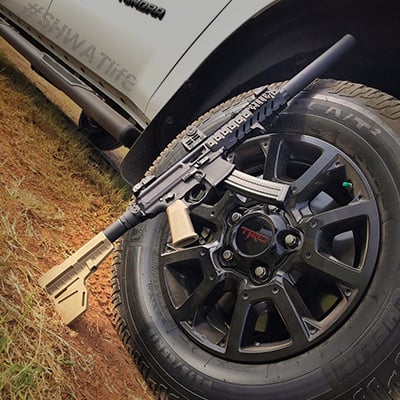 Despite the challenge of shooting such firearms without a stock, their popularity has boomed in recent years. You can purchase pistol length ARs, AKs, HKs, FALs, M1 Carbines – the list goes on and on. Most tactical rifle platforms are offered by some manufacturer in a pistol version featuring sub-16” barrel and no stock. Which begs the question, which is better today, the SBR version of a gun or the “pistol” version? I have both, and can bring some clarity to this question.
Despite the challenge of shooting such firearms without a stock, their popularity has boomed in recent years. You can purchase pistol length ARs, AKs, HKs, FALs, M1 Carbines – the list goes on and on. Most tactical rifle platforms are offered by some manufacturer in a pistol version featuring sub-16” barrel and no stock. Which begs the question, which is better today, the SBR version of a gun or the “pistol” version? I have both, and can bring some clarity to this question.
To compare the SBR vs. pistol variants of the same firearm we need to first understand the differences. Essentially, a Short Barreled Rifle has a barrel shorter than sixteen inches or an overall length of less than twenty-six inches. Pistol versions of SBRs are legally classified as “pistols” because they drop the butt stock, providing only a pistol grip for the shooter. Thus they meet the ATF definition of a handgun: “designed to fire with one hand.” That might seem like a stretch, but we’ll get back to it shortly.
The path to control with a shorter, lighter platform
For most of us, we start down this SBR or pistol path with the goal of obtaining a shorter, handier firearm that allows for ease of operation and storage in tight spaces. Shooters and hunters of all stripes can appreciate these benefits. To this end, SBRs can be purchased from a Class 3 Firearms dealer, home built from scratch, created by shortening the barrel of a rifle, or by adding a stock to a pistol version of the firearm.
Sometimes, however, we start with the goal of making a pistol platform like the Brugger and Thomet TP9 easier to control and shoot accurately by adding a stock or brace. Instead of going for a smaller platform, in this case we’re working towards a larger platform, similarly sized to a typical SBR. It would be difficult to find a gun handier in tight spaces than that tiny little sub-gun/carbine.
SBRs
Thanks in part to the internet making quality information broadly available, the popularity of SBRs starting taking off a few years ago. Many shooters and hunters discovered that it is not terribly difficult to complete the required ATF paperwork to register a newly “manufactured” or purchased short barreled rifle (SBR). Hoards of DIY AR builders jumped on the bandwagon and commercial manufacturers followed the trend. However, the process has its own share of hoops to jump through and the ongoing ownership/possession maze can be inconvenient.
First, you file the appropriate paperwork with the BATF indicating that you are going to manufacture. Pay your $200 tax and wait. Wait some more. Then still more…. Just before your tax stamp/permission slip shows up, you’ll experience thoughts questioning why you thought this was a good idea.
Eventually you will get a tax stamp from the BATF indicating that you paid your fees and can now have some fun. If you started your build with a AR pistol, simply remove the pistol receiver extension (commonly called a buffer tube) and add a standard carbine one. Then add your choice of stock and you are off and running. If you’re manufacturing your SBR you can now put the parts together completing your build. It is worth mentioning that there is also an engraving requirement, but this service is easily obtained. Other platforms are similarly simple to SBR, such as pistol versions of the MP5 and G3 where adding a stock takes no more effort than swapping out the back end of the gun. So far, so good.
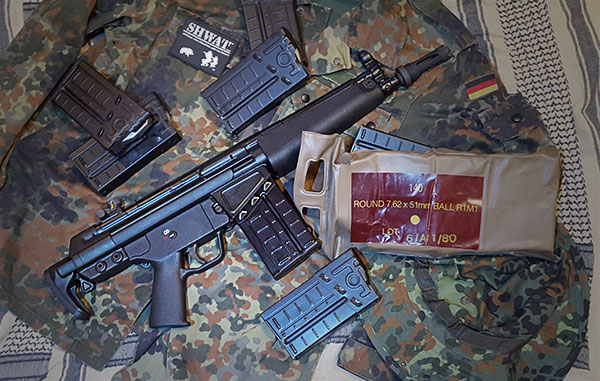
However, there is the $200 fee to obtain the tax stamp indicating the SBR is legally registered. While not exorbitant, this can be hard to stomach when a complete SBR may not cost much more than $500. SBRs cannot be moved between states without notifying the ATF. There are storage requirements to keep them out of unauthorized hands and extra procedures for selling or passing them in a will to another individual. Some people understandably conclude the SBR route just isn’t worth the trouble. Some people don’t have a choice in the matter as their home state outlaws possession of SBRs. These factors bring the pistol variant options to the forefront.
Pistol Variants
The pistol versions of SBRs mitigate many of NFA related ownership issues and allow for easier shooting by those limited to the use of one hand. With their sub-sixteen inch barrels these guns are physically easier to shoot than the full sized and even some SBR versions. Shooting these pistols accurately, however, isn’t as easy. Pistol versions of long-guns are generally too heavy and bulky to hold like a traditional handgun when shooting – even two handed.
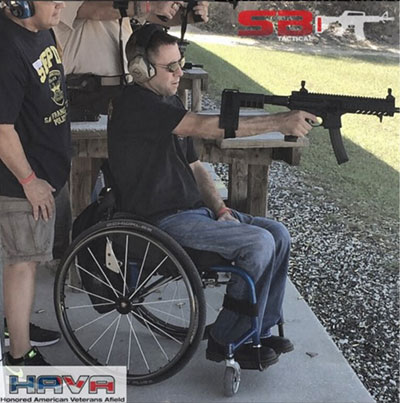
SB Tactical was founded to improve stability and accuracy when shooting pistol versions of SBRs when limited to the use of just one hand. This is a challenge seen all too frequently in the community of war veterans. SB Tactical brought to market the first arm brace designed to mount on a pistol where you’d expect to see a stock on an SBR. By strapping the firearm brace to the shooter’s forearm much greater control and accuracy is obtained.
Of course this option make sense for shooters without a disability as well, and the market for arm braces took off. Shooters and hunters found other ways to maximize the benefit of the brace. Soon multiple firearms manufacturers adapted their pistol variants to accept the SB Tactical arm brace. Sig Arms spearheade the revolution by offering factory pistol versions of the SIG556 and M400 which are already brace equipped. Century Arms followed suit with brace equipped AK pistols. Other manufacturers then brought competing models to us, and SB Tactical responded by expanding their line to fit a variety of platforms beyond the AR-15.
Improving the Pistol Variant
While not as stable as a stocked SBR, an arm brace adds enough stability to make the firearm considerably more useful than without it. Installation of the SB Tactical and competing Shockwave Blade braces could not be simpler. Just add a pistol buffer tube and slide the brace on. A variety of companies make brace specific tubes, but my favorites are from KAK Industries. They feature a ring or enlarged section of the tube designed to keep the brace from sliding forward during recoil. One tube model features dimples for the Shockwave Blade’s set screw to engage, locking the brace into position while allowing length adjustment to fit the shooter’s arm.
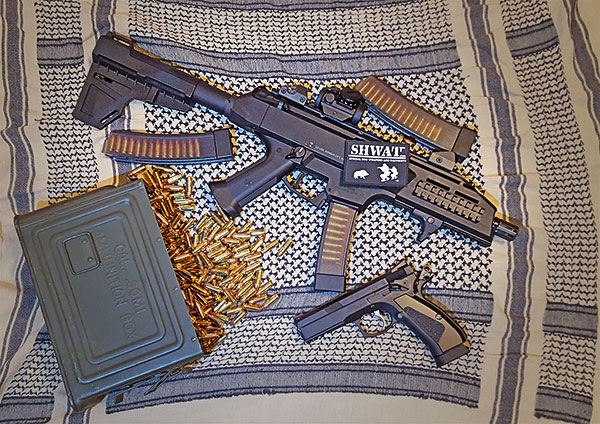
Pistol vs. SBR
If it’s a money decision, consider this: You can save some money using the brace approach instead of going the SBR route. The Shockwave Blade typically costs around $50. Add your mounting hardware and you’re still probably out less cash than the $200 SBR NFA tax.
Going with a pistol version doesn’t lock you into the pistol variant. Should you decide you’d like to transition from your pistol variant (braced or not) to SBR, you’ll find it’s generally a simple matter to swap the pistol tube out for a carbine one and add a proper butt stock, after getting your ATF stamp back of course. This path makes sense for a lot of us who still value the ability to shoulder a properly stocked SBR. You could easily set the pistol up with an arm brace while waiting for the ATF to approve an SBR conversion. Once the tax stamp arrives, the tube and stock can be swapped. The pistol tube and brace can be saved for the next project or easily sold. They are a hot item right now.
In some cases, pistol variants are the easy choice. Stocks for some platforms are rare if not impossible to find, and when located may demand a relatively high price. For example the stock for a CZ Bren 805 is not commonly available, yet the kit to adapt a buffer tube retails for only $99 on CZ’s web store. Add a brace if you’d like and you’re good to go. Yet another win for the pistol platform!
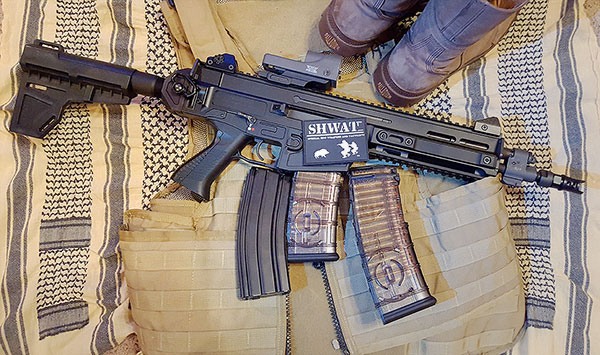
From a legal standpoint the arm brace avoids the extra regulations associated with owning an NFA item. There are no special storage or travel requirements. Selling the firearm is the same as any other handgun in terms of local, state, and federal laws. This also applies to allowing another shooter to use the firearm. Of course, some states may not allow pistol length versions of rifles, but in that case SBRs are probably ruled out, too.
I would be a negligent journalist if I did not mention the legal considerations of how the brace is used. The ATF initially said a brace is not ever a stock, that using it to shoulder the pistol didn’t magically turn the pistol into an SBR. Many folks then started using the brace as a stock. Someone then wrote one letter too many to the ATF asking about the legality of this use and the ATF seemingly reversed their previous position advising that intentional use of a brace to build an unregistered SBR is illegal. I will leave it to you to research the legal aspects of brace use and make good choices in how you use it. EDIT: ATF pistol brace rules reverted again >>
The Crux of the Matter
Ultimately this entire discussion exists only because the United States has a bizarre criminal code that argues the shorter a rifle’s barrel, the more dangerous it is. Anyone who knows anything about ballistics finds that a laughable idea. Generally speaking, the shorter the barrel the lower the terminal performance results. Neither does the shorter barrel of an 8” AR15 SBR make it easy to conceal. Criminals will make different choices if they want to hide a firearm. Making SBRs subject to NFA requirements serves no purpose other than burden law abiding gun owners. It is worth noting that many nations with far more arcane and complex gun ownership requirements than the United States have no restrictions on barrel length. Go Canada!

Well at least they have one upside to their otherwise terribly restrictive gun laws. Barring some great shift in American politicians’ attitude towards gun laws, the barrel length regulations are unlikely to change. The arm brace option provides law abiding shooters a means of obtaining better shootability from firearms with shorter barrels without having to pay the extra tax and time involved in getting an SBR. Is it the same thing? No, but for many folks it will do, at least for the time being while they jump through the hoops to get the real deal and legally put a stock on that short, handy pistol.
UPDATE 2/1/2017


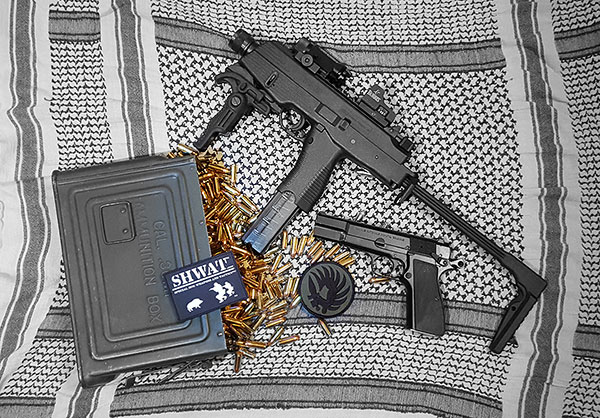
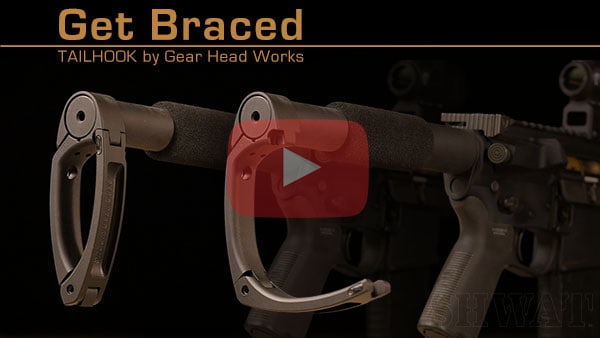




with the new decision on the adjustable arm braces, does this make it ok for all arm braces to abe “adjustable”?
Remains to be seen.